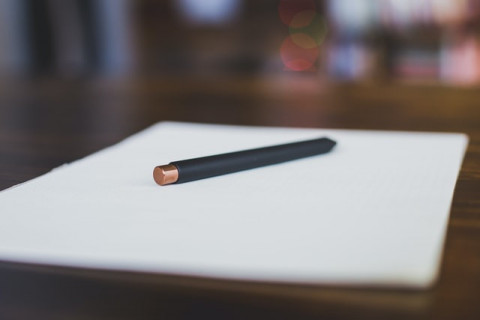
9 min
1
10.04.2022

The ultimate goal of reading is to obtain information. However, it is not always necessary to slowly indulge in the whole volume of text to achieve it. This is especially true when it comes to busy students having to go through numerous textbooks, lecture notes, and handouts on a weekly basis. Learning how to study from a textbook effectively can significantly enhance your ability to absorb and retain critical information.
Luckily, there are active reading strategies used to improve the effectiveness of how you read and memorize the study material. Read ahead for detailed information on the most effective reading approaches!
How to Study From a Textbook: Pre-Reading Steps to Enhance Understanding
Before diving into the textbook, it's crucial to set your reading objectives. Ask yourself what you need to learn from this study session. Creating a list of questions you want answered by the text can guide your focus and make your studying more goal-oriented. Additionally, reviewing the table of contents and chapter summaries provides an overview of the material's structure, helping you to mentally prepare for the concepts you're about to explore.
What Is the Right Approach to Read Text Books?
There are three styles of reading textbooks: skimming, scanning, and in-depth reading. Which one to use depends on your learning goals and the deadlines you are facing. Let's take a look at each of them in detail.
Skimming
Skimming is about going through the text by reading the headings and first sentences of paragraphs. There are three types of skimming:
- Preview is used for determining the need to read, such as when searching for material online or sorting emails. Read the first paragraph, the headings, and the first sentences of the following paragraphs.
- Overview is useful for getting a better understanding of the text without planning to proceed to in-depth studying of the material. In addition to doing the preview, pay attention to text structure and keywords.
- Review the text by briefly looking through it to refresh the information in your memory after having read it some time ago. Prepare to memorize as much as possible before going through the text and concentrate on the order of events and essential details - names, places, terms.
Scanning
When using the scanning method, you don't have to read the entire text but rather look for a specific keyword or an answer to a question. This approach is perfect for the search of information in a book or an educational article.
Make sure you are aware of what exactly you are looking for. Think about how the information you are searching for may appear and browse the page without going into in-depth reading until you find out the keywords that sound relevant to your article or chapter questions.
In-Depth Reading
This is the most time and effort-consuming reading style from the ones mentioned here. However, it is still a lot more effective and fast than a regular read process! In-depth reading is a study strategy that allows you to focus on the parts of the text that are difficult to comprehend and understand the key terms and the author's ideas.
If outstanding reading comprehension is required for you not to fail the course assessment, it is wise to opt for an in-depth studying method. However, there is no one-fit-all solution when it comes to how to retain information when reading a textbook.
The Best In-Depth Textbook Reading Strategies
Below, you will find a selection of four in-depth reading strategies that will be extremely helpful with your homework. Check them out and choose the one that fits best, depending on the specific task you've received.
📕 RIDA Approach
Read - Imagine - Describe - Add
- Read a chapter or section.
- Imagine the events described as if in a movie or an animation.
- Describe what you've read in your own words while recalling the scenes you've imagined.
- Add details as you read.
The RIDA strategy engages the imagination, which is great for long-term memory. The trick is to imagine scenes while reading as vividly as possible. This method is fun and life-changing when it comes to studying literature and history lessons.
📗 RAP Strategy
Read - Ask - Put
- Read through a paragraph or section. It is advisable not to read large volumes at once but rather divide the text into smaller parts for better memorization.
- Ask yourself questions about the passage you've read. What was it about? What are its main ideas? What is crucial to remember?
- Put the answers to those questions into your own words. At this point, note-taking is recommendable for the sake of future revision of the material.
The RAP strategy is based on retelling the content you've read and works miracles for in-depth studying of research papers and textbooks, especially when it comes to phrases or paragraphs challenging for comprehension.
📘 SQ3R Strategy
Survey - Question - Read - Recite - Review
- Survey the material by pre-reading or skimming through the text and paying attention to the headings and figures.
- Question yourself on the keywords and subheadings you've noticed.
- Read the text thoughtfully, keeping in mind the review questions and trying to answer them.
- Recite by making notes after reading. Rely on the short-term memory that captured the key concepts throughout the reading process.
- Review the notes you've taken and add the information you might have missed out on before.
The SQ3R method is ideal for delving into massive reading assignments and encourages effective reading through previewing the material, questioning it, and taking concise notes.
📙 Five "S" Method
Skim - Scan - Select - Slurp - Summarize
- Skim the text, including the table of contents and summary, if applicable. Briefly browse the material from the introduction to the end of the chapter, paying extra attention to the first sentences of each paragraph.
- Scan for the main points and answers.
- Select sections that deserve the most attention.
- Slurp the important paragraphs and read them attentively.
- Summarize what you've studied.
If you are in a bind preparing for the upcoming exam or test questions, this approach will help you filter out the most important information and memorize it effectively.
Post-Reading Activities for Better Retention
After completing your reading, it's essential to engage in activities that consolidate your learning. Summarizing the chapter in your own words, discussing the material with classmates, or teaching the concepts to someone else can significantly enhance retention. Creating mind maps or diagrams to visualize the relationships between ideas can also be helpful. Finally, answering the questions you set out at the beginning of your reading session not only tests your comprehension but reinforces the material in your memory.
Leveraging AI for Enhanced Reading Support
AI tools have become invaluable for students looking to enhance their reading strategies. AI can assist in summarizing lengthy texts, translating unfamiliar languages, and even generating questions from the material for self-quizzing purposes. Tools like text-to-speech can help auditory learners by reading the text aloud, facilitating a better understanding of the material. Additionally, AI-powered applications can highlight key concepts and predict potential exam questions, making study sessions more efficient and targeted.
Top Tips on How to Read a Textbook Effectively
- Engage Multiple Senses for Enhanced Recall: Enhancing your recall and retention rates can be achieved by engaging as many senses as possible during your study sessions. This approach ensures that the information is stored more effectively in your memory, facilitating easier retrieval when needed.
- Define Your Purpose Before You Start: Before diving into your reading material, spend a few minutes setting clear objectives for your reading session. Knowing your purpose will sharpen your focus and guide your engagement with the text, particularly in a college setting where the density of information can be overwhelming.
- Utilize Various Resources to Complement Your Reading: Don't rely solely on your textbook; use additional resources to deepen your understanding of the subject matter. This could include online lectures, study groups, or academic journals, which can provide valuable insights and different perspectives on the topics covered in your textbook effectively.
- Practice Strategic Note-Taking: Effective note-taking is crucial for summarizing and processing information. Develop a system that works for you, whether it's outlining, mapping, or bullet journaling, to capture key points, conclusions, and queries that arise during your study sessions.
- Allocate Time for Review: After completing a reading assignment, set aside time to review the pages you've just studied. This reinforces your retention of the material and allows you to draw conclusions from the content, linking new knowledge to what you already know.
- Break Your Reading into Manageable Sections: To maintain concentration and prevent fatigue, divide your rstudying into smaller, more manageable sections. This method enables you to absorb and understand the content more thoroughly without becoming overwhelmed by the volume of pages.
- Approach Your Textbook as a Resource, Not a Task: Consider learning how to study from a textbook effectively as a valuable resource in your academic journey, not just another task to check off your list. This mindset shift can transform how you interact with the material, encouraging a deeper, more engaged studying experience.
Effective Reading - One of the Most Useful Study Skills
Now that you are aware of some of the most effective textbook reading strategies, it is time to apply them in your studies. Follow our tips, do not hesitate to turn to our writing services, and watch how your academic performance improves!
- Brown, Peter C., Henry L. Roediger III, and Mark A. McDaniel. Make It Stick: The Science of Successful Learning. Harvard University Press, 2014.
- Carey, Benedict. How We Learn: The Surprising Truth About When, Where, and Why It Happens. Random House, 2014.
- Serravallo, Jennifer. The Reading Strategies Book: Your Everything Guide to Developing Skilled Readers. Heinemann, 2015.
- Adler, Mortimer J., and Charles Van Doren. How to Read a Book: The Classic Guide to Intelligent Reading. Simon & Schuster, 1972.



